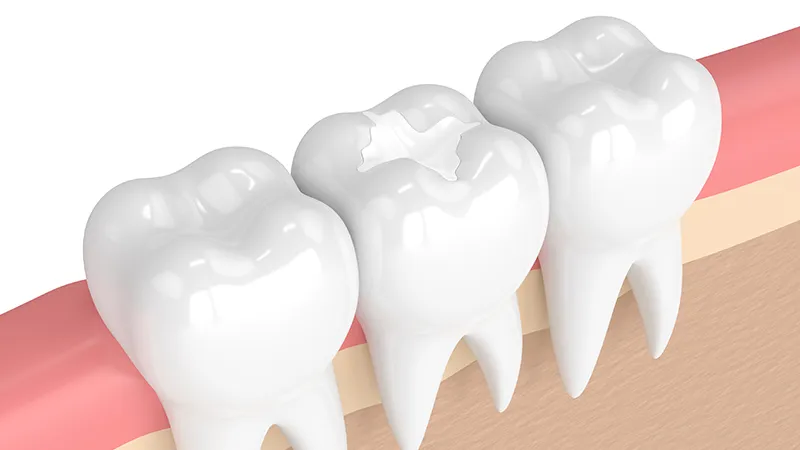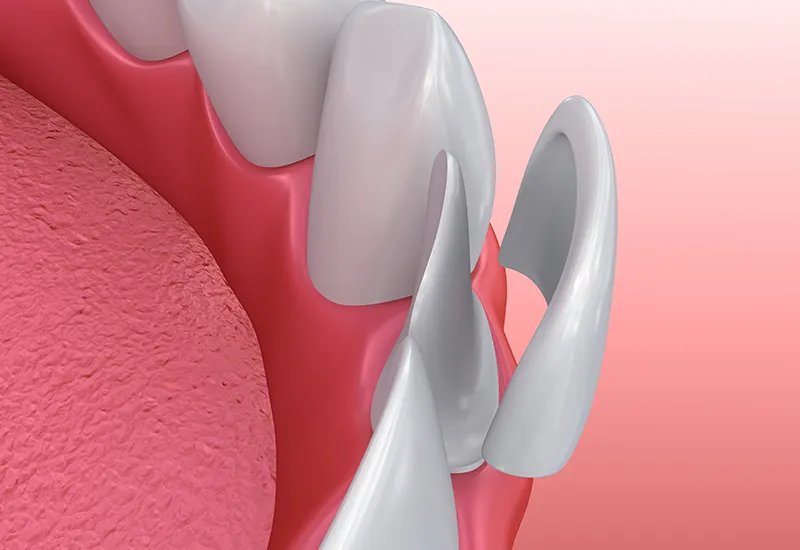Comprehensive guide to tooth-coloured fillings
If you’re looking for a dental solution that restores your teeth and blends seamlessly with your natural smile, tooth-coloured fillings are an excellent choice. Gone are the days of noticeable silver fillings—today, you have the option to choose fillings that are both strong and virtually invisible.
In this guide, we’ll explore why tooth-coloured fillings are a popular choice, how they compare to traditional amalgam fillings, their durability, costs, and the alternatives available, such as crowns, inlays, onlays, and veneers. Keep reading to discover how you can achieve a healthier, more beautiful smile with the right filling solution.
What are tooth-coloured fillings?
Tooth-coloured fillings, often referred to as white or composite resin fillings, are crafted from a blend of acrylic resin and fine glass particles. These advanced materials are specifically designed to match the natural colour of your teeth, offering a discreet and aesthetically pleasing solution for repairing decayed or damaged teeth. Ideal for visible areas, tooth-coloured fillings provide a seamless, natural look while restoring both function and beauty to your smile.

Why tooth-coloured fillings are a great choice
Aesthetics: One of the main reasons people choose tooth-coloured fillings is their natural appearance. Unlike silver amalgam fillings, which are easily noticeable, tooth-coloured fillings blend seamlessly with the natural shade of your teeth, making them virtually invisible. This makes them an ideal choice for visible areas, particularly for cavities in the front teeth.
Minimally invasive: Tooth-coloured fillings bond directly to the tooth structure, requiring less drilling than traditional amalgam fillings. This approach allows your dentist to preserve more of your natural tooth, whereas amalgam fillings often require the removal of healthy tooth tissue to secure the filling.
Versatility: Tooth-coloured fillings are highly versatile and can be used in almost any area of the mouth, not just the front teeth. They can be sculpted to match the natural contours of your tooth, providing a durable and effective solution for cavities of all sizes.
Mercury-free: Unlike amalgam fillings, which contain mercury, tooth-coloured fillings are free from this controversial substance. Many people prefer tooth-coloured fillings for peace of mind, knowing they are choosing a safer, non-toxic alternative for their dental care.
How strong are tooth-coloured fillings?
Tooth-coloured fillings are both strong and durable, with their strength largely depending on the specific material used. Modern composite resins, made with fine glass particles, offer excellent strength and wear resistance, making them suitable for cavities in both front and back teeth. While they may not be as durable as amalgam fillings for large cavities or heavy bite forces, advancements in composite materials have significantly enhanced their longevity, allowing them to withstand normal chewing and biting pressure for many years.
For larger cavities or those in the back teeth, patients may benefit from alternative solutions such as ceramic crowns, inlays, or onlays, which provide additional strength and durability.
Alternatives to dental fillings
Crowns: A dental crown is a full-coverage restoration that completely encases a decayed or damaged tooth, offering strength and protection. Crowns are typically used when a filling alone cannot provide sufficient support, particularly for teeth that endure heavy pressure, such as molars. Crowns can be crafted from materials like porcelain, ceramic, or metal. Porcelain crowns provide a tooth-coloured appearance but may come at a higher cost than tooth-coloured fillings.
Inlays and onlays: Inlays and onlays are indirect restorations made in a dental lab and then bonded to the tooth. These are often recommended for larger cavities, especially in the back teeth, where additional strength is required. Inlays fit within the tooth’s natural contours, while onlays cover one or more cusps. Typically made from porcelain or composite materials, both options offer a natural look and enhanced durability. Although they can be more expensive than tooth-coloured fillings, inlays and onlays provide longer-lasting protection and are ideal for larger or more complex cavities.
Veneers: Dental veneers are a great option for improving the appearance of front teeth. These thin, custom-made shells cover the front surface of the teeth and are often used to address imperfections such as discolouration, chips, or gaps. Veneers are typically made from durable porcelain or composite resins and provide a natural-looking, long-lasting solution for patients looking to enhance their smile.

Cost of natural-looking fillings
While they may have a higher upfront cost, natural-looking fillings are often considered a worthwhile investment due to their beautiful appearance and long-lasting results. Additionally, these type of fillings offer a cost-effective solution compared to veneers or crowns.
Are dental fillings right for you?
Dental fillings offer an attractive and effective way to restore teeth affected by decay or damage. With their seamless appearance, minimally invasive procedure, and mercury-free composition, they provide a modern, natural-looking solution for many patients. While they are strong and durable, larger cavities or those in high-pressure areas like the back teeth may benefit from alternatives such as crowns, inlays, or onlays.
If you want a discreet, reliable filling that blends beautifully with your natural smile, composite dental fillings are a fantastic option. Schedule a consultation with your dentist to explore the best treatment for your unique needs and keep your smile healthy, strong, and radiant for years to come.


About the author
Dr. Munir Mayat is a skilled dentist with over two decades of experience. He graduated from the University of Pretoria in South Africa and has been practising dentistry in Brisbane for the past decade. Dr. Munir is dedicated to providing high-quality, patient-centred care. He is also a supervisor at Griffith University School of Dentistry.
Learn more about Dr. Munir and his practice: Complete Dental Works





